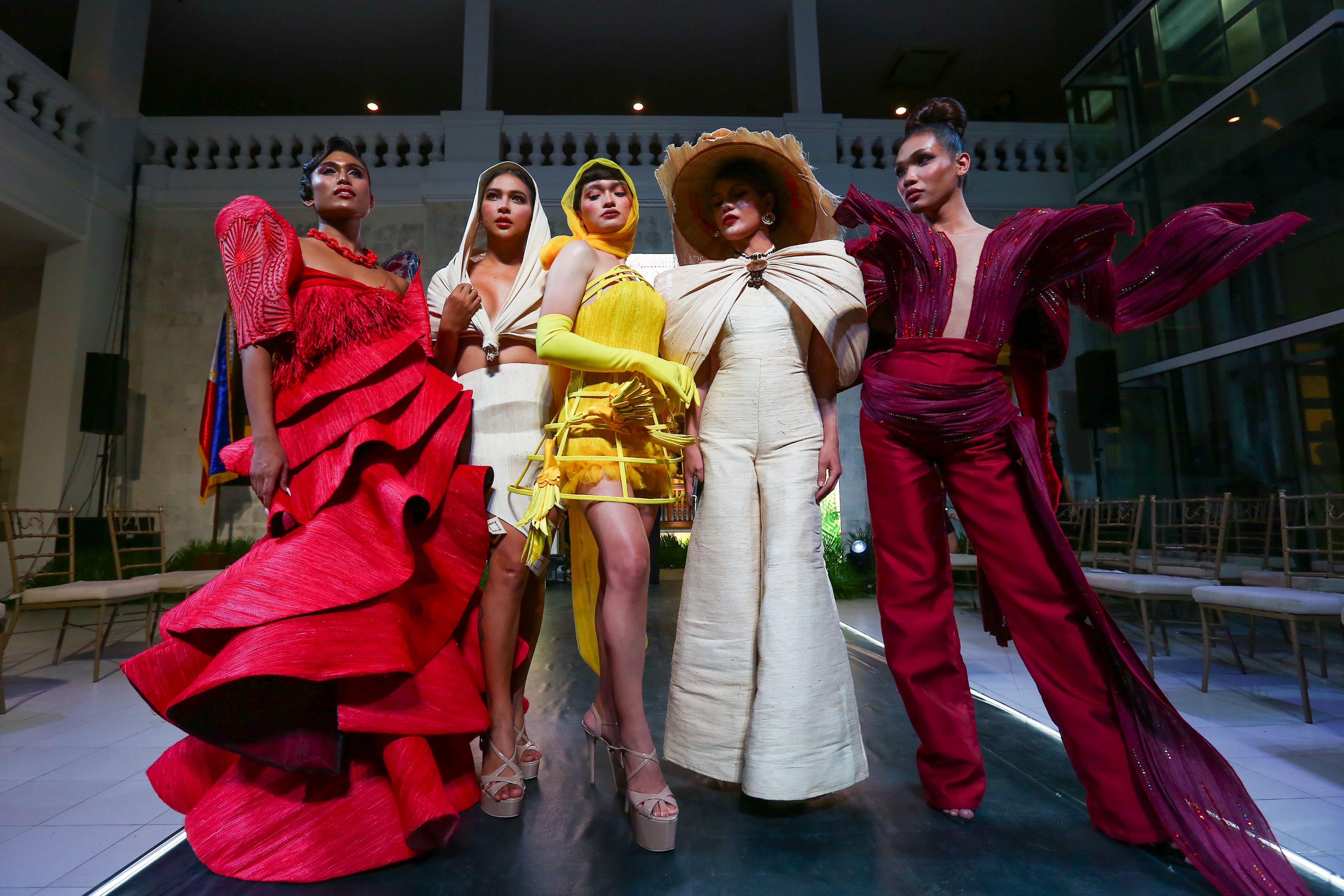Loud and proud in raffia
Boholanon designers shed the spotlight on Indigenous textile
By Poch Eulalia
At A Glance
- In pre-colonial Visayas, women and crossdressing men worked together to weave various items making use of saguran, or raffia, that comes from an Indigenous buri fiber.

Pride Month has always served as a momentous occasion for members of the LGBTQIA+ community to band together and show how proud they are of their gender identities. It’s a time the clamor for solidarity and inclusivity is at its highest. Locally, Pride is widely celebrated, reaching the peak of festivities during the annual Pride March. It comes as no surprise, given how deeply rooted our nation’s history is with the LGBTQIA+ community.

One instance of such acceptance traces back to pre-colonial times when gender equality was the norm before foreign ideals entered the country. Much of our Indigenous tribes would look to women and feminine men, referred to as the babaylan (shamans), as mediums that allowed our ancestors to communicate with spirits and deities. In pre-colonial Visayas, women and crossdressing men worked together to weave various items making use of saguran, or raffia, that comes from an Indigenous buri fiber. It is woven using a wooden handloom called the hablanan.

Today, the industry continues to thrive as Boholanons expand the craft further from the fabric’s original use as a rice mat and blanket. The fabric is now innovatively used to create handbags, coin purses, and placemats, to name a few.
In hopes of showing just how versatile the saguran fabric can be and as a way of celebrating Pride, the National Museum of the Philippines - Bohol recently hosted a runway show entitled, “Weaving with Pride: Culture, Creativity, Pride.” Here, six Boholanon designers—Noel Bompat Estopito, Christian Kent Paglinawan, Christian Bustrillos, Christian Relator, EJ Relampagos, and Shanon Pamaong—made a brilliant display of the many possibilities that can be drawn out of the local fabric.

In a stunning display of yellow and green, Noel Bompat Estopito and Christian Kent Paglinawan’s designs showed just how bright the saguran can shine. Meanwhile, EJ Relampagos’ designs channeled Bohol’s rich landscape. One look at the models’ hats can remind most about the iconic Chocolate Hills. In Christian Relator’s collections, the vivid red dresses evoked fierce, fiery looks. It was followed shortly by Christian Bustrillos’ works, whose keen attention to detail can be appreciated through each of the dresses’ intricate square patterns. Wrapping it all up were the works of Shanon Pamaong, utilizing all four colors of the Philippine flag. A grand finale that left folks proud of our inclusive and rich heritage, worthy of a global display.
